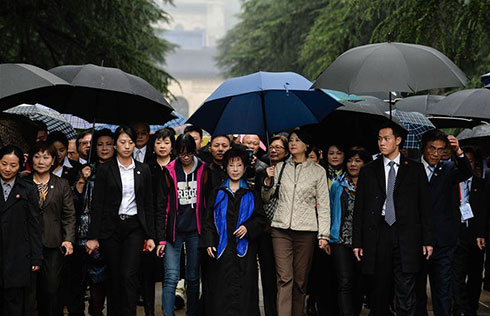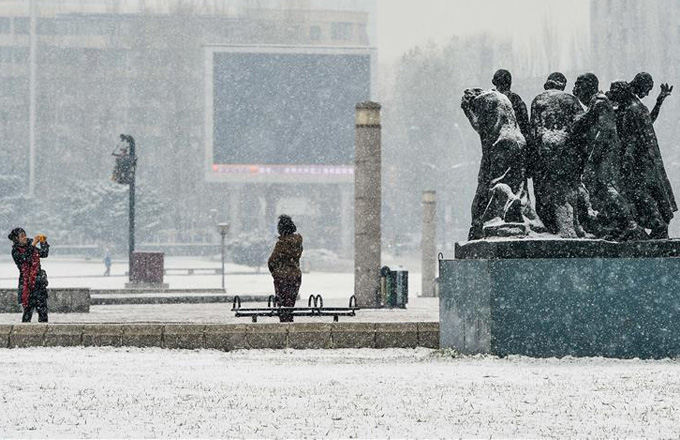The long, hard road to the universal village toilet
CHENGDU -- "Going to the toilet will not be so torturous this winter," said Guan Fuyuan, 62, puffing on a cigarette.
Until recently, like most people in Peng'an County, Sichuan Province, Guan had lived his whole life without an indoor toilet. Exposed to the elements, the communal dry toilet nearby was smelly in the summer, cold in the winter and slippery when wet.
"Now we have a new bathroom with a flush toilet and a heater," he said with an expression of some considerable pride.
SANITATION REVOLUTION
Guan is just one of the beneficiaries of a campaign to install new toilets in 55 of the county's most impoverished villages.
China's rural toilet revolution began 12 years ago. From 2004 to 2013, 8.27 billion yuan ($1.2 billion) was spent on new toilets in some of the poorest parts of the country, but despite some remarkable achievements, a long march still lies ahead before the revolution can be considered successful.
For Yueze Huoshi from Liangshan Yi Autonomous Prefecture, also in Sichuan, the woods behind his house is the family toilet. Many villages in the mountainous prefecture are still without any toilet at all, and villagers have to relieve themselves in the wild -- hail, rain or shine. Some are even not clear about what a toilet looks like.
Li Aijun of the county government said that with so many local people in extreme poverty, the priority had been finding new sources of income and the toilet problem was largely ignored. All that is set to change with plans to build at least one public toilet in each village.
Some "more well-off" areas in the prefecture have toilets, but the environment is harsh and the toilets somewhat unsophisticated. Ada Moer, 42, is a widow who supports her family by raising poultry and swine. Their toilet is just an open pit next to the pigsty, covered with two stone slabs.
"We move the stones when using to toilet. Sometimes, the pigs snuffle me with their noses while I'm squatting," she said, pointing to the toilet and its attendant swarm of flies.
Are Rigu, head of the township, said that most villager's toilets are attached to pigsties or cattle pens. "Life will get better soon, as most households have received a 35,000-yuan government grant to build new homes. The new houses will have separate toilets and kitchens," he said.
MISSED CONNECTIONS
In the local primary school, the new buildings are light and spacious. Headteacher Baoji Saner said the school is the best equipped in town, but the whole complex, with 600 students, has only one toilet. At less than ten square meters, there are six pits for boys and six for girls. "At break time, the toilet is far too small for all the students to relieve themselves," Baoji said.
At an altitude of 3,400 meters, Kalong village is in dire need of adequate toilets. With the help of a 15,000-yuan grant and the help of her neighbors, Gargo, 72, moved into a new house earlier this year. In her cozy two-storey home against the hillside, Gargo is immensely pleased with her new toilet and keeps it sparklingly clean. But this is only half the story.
The toilet is not connected to any drainage system and all the waste is simply discharged onto the grass directly outside. Gargo said many of other villagers are in the same situation, and nothing is being done to address the matter.
Liu Weijia, deputy head of Sichuan immigrants poverty alleviation bureau, says the toilet situation is closely linked to the social and economic status of the locale. When people on the poverty line are struggling just to feed themselves, they have neither the desire nor the ability to improve their toilets.
Hu Guangwei, professor of Sichuan University, said rural sanitation is a key battleground in the war against poverty.
"The day when every household in the countryside has a clean, eco-friendly toilet is probably the day when we can declare victory over poverty," Liu said.



















